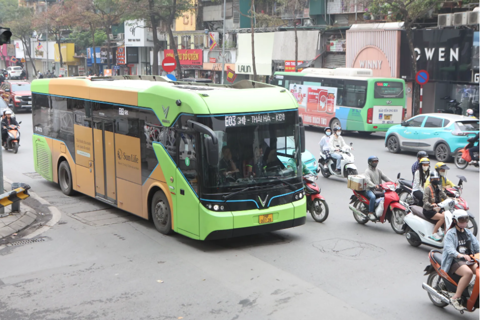Historic pottery exhibition traces shared cultural journey from Thang Long to Phu Xuan
A new thematic exhibition in Hanoi brings together centuries-old pottery from the former capitals of Thang Long and Phu Xuan, highlighting shared cultural roots and the enduring legacy of Vietnam’s ceramic traditions.
18 Dec, 10:27 PMHanoi artists promote eco-friendly art experiences for children
Unlike academic classes that are heavily focused on technique, Malena's Dream Canvas encourages spontaneity in creativity to nurture and protect the soul, also known as art in sanctuary, where each person is allowed to explore, share, heal and live fully with their passion.
18 Dec, 04:01 PMVietnam moves toward mandatory digital traceability for textile products
Experts believe that each product needs a "digital passport" containing all production information for traceability, not just a label.
18 Dec, 03:51 PMHanoi stays on course for 2030 green transport transition
Hanoi’s bus fleet has already met its 2026 green conversion target, one year ahead of schedule.
18 Dec, 03:31 PMHanoi drafts multi-tier talent strategy to build digital elite workforce
Hanoi is shaping a long-term talent development strategy to build a two-tier workforce, from digital professionals to elite talent, while addressing youth concerns over education, startups and sustainable growth.
18 Dec, 03:13 PMHanoi speeds up priority projects with Japan
As comprehensive strategic partners, Vietnam and Japan are strengthening bilateral ties more than ever, including cooperation between Hanoi and Japanese localities.
18 Dec, 02:50 PMPara Natuh Pickleball tournament promotes inclusive sport in Vietnam
The tournament aims to convey the message “Inclusion – Respect – Equality – For Humanity.” It will also offer Vietnamese para pickleball athletes an opportunity to connect with the Paralympic network spanning 206 countries.
18 Dec, 01:35 PMHanoi to spend US$1 billion to upgrade urban drainages, tackle flooding
Hanoi earmarks billion-dollar funding to accelerate drainage upgrades, tackle chronic flooding and climate-driven downpours ahead of intensifying rainy seasons citywide.
17 Dec, 07:09 PM








